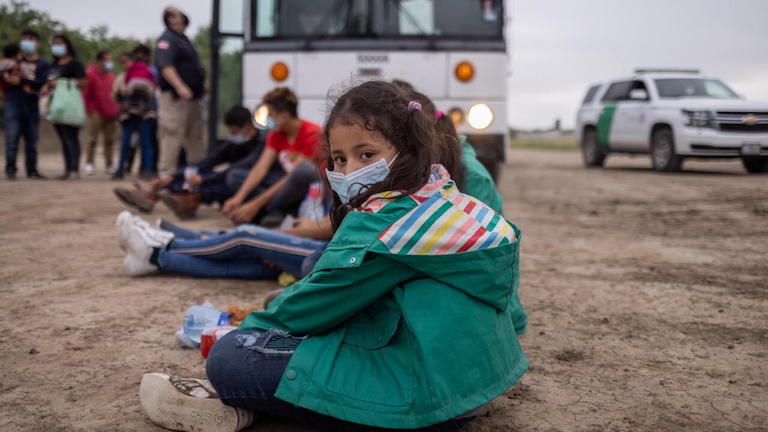In recent years, a disturbing pattern has emerged at the United States’ borders with Mexico and Canada: Indian parents abandoning their children, some as young as four, in hopes of securing a foothold in America. The phenomenon, driven by dreams of a better life and legal residency, has come under sharp scrutiny as numbers rise and authorities crack down on illegal immigration.
Why Are Indian Parents Leaving Their Children at US Borders?
The primary motivation behind this trend is the pursuit of American residency, often referred to as the “green card dream”. Many Indian families, particularly from regions like Gujarat, see the United States as a land of opportunity. Lacking valid visas or legal pathways, some parents resort to desperate measures. In most cases, the parents themselves have already entered the US illegally. They then arrange for their children to be brought to the border, either by relatives or by joining groups of other migrants. Once at the border, the children are left alone-sometimes with nothing but a chit of paper bearing their parents’ names and contact details-in the hope that US authorities will take them into custody.
This is not a random act of abandonment but a calculated tactic. The presence of the child in the US allows parents to apply for asylum or other forms of relief, often on humanitarian grounds. The children, once taken in by US authorities, are typically placed in shelters or foster care. The hope is that, through legal proceedings, the children will be granted residency or even citizenship, paving the way for family reunification and legal status for the parents.
How the Scheme Works
The process generally unfolds in a series of steps. First, the parents, already in the US illegally, coordinate with smugglers or acquaintances to bring their children to the border. The children, usually between 12 and 17 years old but sometimes as young as four or six, are sent with adults or groups of migrants. As the group nears a US checkpoint, the children are deliberately left behind. US border agents then find these unaccompanied minors, who often have no documents, only a note with contact information.
Once in custody, the children are processed by US authorities and placed in the care of child welfare agencies. The parents, now with their child inside the US, may apply for asylum or other relief, citing the presence of their minor child as a humanitarian case. In some instances, the children are granted green cards within six to eight months following juvenile court decisions, after which the parents or relatives may begin the adoption or reunification process.
Trends
The scale of this trend is significant and growing. According to US Customs and Border Protection data, at least 1,656 unaccompanied Indian minors were apprehended at US borders between 2022 and 2025. The numbers have surged since the Covid-19 pandemic, with 730 minors intercepted in 2023, 517 in 2024, and 77 in just the five months from October 2024 to February 2025. Most of these children were found at the US-Mexico border, but a notable number also crossed from Canada, sometimes braving harsh weather conditions.
A particularly striking case involved a lawyer from Mehsana, Gujarat, who, after entering the US illegally with his wife, arranged for his two-year-old son to be brought to the US by a cousin. The child was abandoned at the Texas border with only a note containing his parents’ contact information. He was eventually found and reunited with his family after being processed by US authorities.
First-Hand Experiences
First-hand accounts from families in Gujarat reveal the calculated nature of the process. One father recounted how, during the pandemic, he asked a cousin travelling illegally to the US to bring his five-year-old son. The cousin left the child at the Texas border, where he was picked up by US security agents. The family’s hope was that the child’s presence would help them secure legal residency through humanitarian channels.
Children found at the border are often frightened and alone, with no guardians or documents. Their ordeal does not end at the border; they face uncertainty in shelters or foster care while their cases are processed. The entire process is fraught with risk, both physical and emotional, for the children involved.
The Response from US Authorities
The US government, particularly under the Trump administration, has begun to respond more aggressively to this trend. Immigration and Customs Enforcement (ICE) is cracking down on the use of unaccompanied minors as a pathway to citizenship, and there is growing scrutiny of asylum claims based on family reunification. Welfare checks and stricter enforcement measures have been implemented, and hundreds of undocumented Indians have been deported in recent months.
The abandonment of Indian children at US borders is a stark manifestation of the desperation and determination driving irregular migration. While some families see it as a last resort for a better future, the practice exposes children to immense danger and uncertainty. As authorities on both sides of the border tighten controls, the risks are likely to increase, making this a humanitarian crisis in urgent need of attention and solutions.


